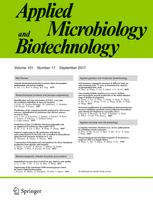Ver ítem
- xmlui.general.dspace_homeCentros e Institutos de InvestigaciónCICVyA. Centro de Investigación en Ciencias Veterinarias y AgronómicasInstituto de BiotecnologíaArtículos científicosxmlui.ArtifactBrowser.ItemViewer.trail
- Inicio
- Centros e Institutos de Investigación
- CICVyA. Centro de Investigación en Ciencias Veterinarias y Agronómicas
- Instituto de Biotecnología
- Artículos científicos
- Ver ítem
The localization of a heterologous displayed antigen in the baculovirus-budded virion determines the type and strength of induced adaptive immune response
Resumen
In the search of strategies of presentation of heterologous antigens to elicit humoral or cellular immune responses that modulate and properly potentiate each type of response, researchers have been studying baculovirus (BV) as vaccine
vectors with promising results. For some years, several research groups explored different antigen presentation approaches using the BV AcNPV by expressing polypeptides on the surface of budded virions or by de novo
[ver mas...]
In the search of strategies of presentation of heterologous antigens to elicit humoral or cellular immune responses that modulate and properly potentiate each type of response, researchers have been studying baculovirus (BV) as vaccine
vectors with promising results. For some years, several research groups explored different antigen presentation approaches using the BV AcNPV by expressing polypeptides on the surface of budded virions or by de novo synthesis of heterologous antigens by transduction of mammalian cells. In the case of expression on the surface of budded virions, for example, researchers have
expressed polypeptides in peplomers as GP64 glycoprotein fusions or distributed throughout the entire surface by fusions to portions of the G protein of vesicular stomatitis virus, VSV.
Recently, our group developed the strategy of crosspresentation of antigens by fusions ofGP64 to the capsid protein VP39 (capsid display) for the generation of cytotoxic responses.
While the different strategies showed to be effective in raising immune responses, the individuality of each analysis makes difficult the comparison of the results. Here, by comparing the different strategies, we show that localization of the model antigen ovalbumin (OVA) strongly determined the quality and intensity
of the adaptive response to the heterologous antigen.
Furthermore, surface display favored humoral responses,whereas capsid display favored cytotoxic responses. Finally, capsid display showed a much more efficient strategy to activate CD8-mediated responses than transduction. The incorporation
of adjuvants in baculovirus formulations dramatically diminished the immunostimulatory properties of baculovirus.
[Cerrar]

Fuente
Applied microbiology and biotechnology 101 (10) : 4175–4184. (May 2017)
Fecha
2017-05
ISSN
0175-7598 (Print)
1432-0614 (Online)
1432-0614 (Online)
Formato
pdf
Tipo de documento
artículo
Palabras Claves
Derechos de acceso
Restringido
 Excepto donde se diga explicitamente, este item se publica bajo la siguiente descripción: Creative Commons Attribution-NonCommercial-ShareAlike 2.5 Unported (CC BY-NC-SA 2.5)
Excepto donde se diga explicitamente, este item se publica bajo la siguiente descripción: Creative Commons Attribution-NonCommercial-ShareAlike 2.5 Unported (CC BY-NC-SA 2.5)

